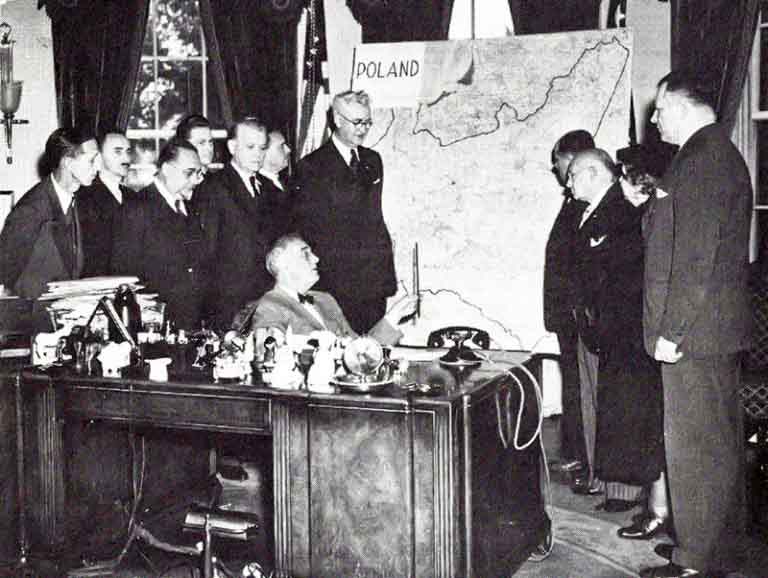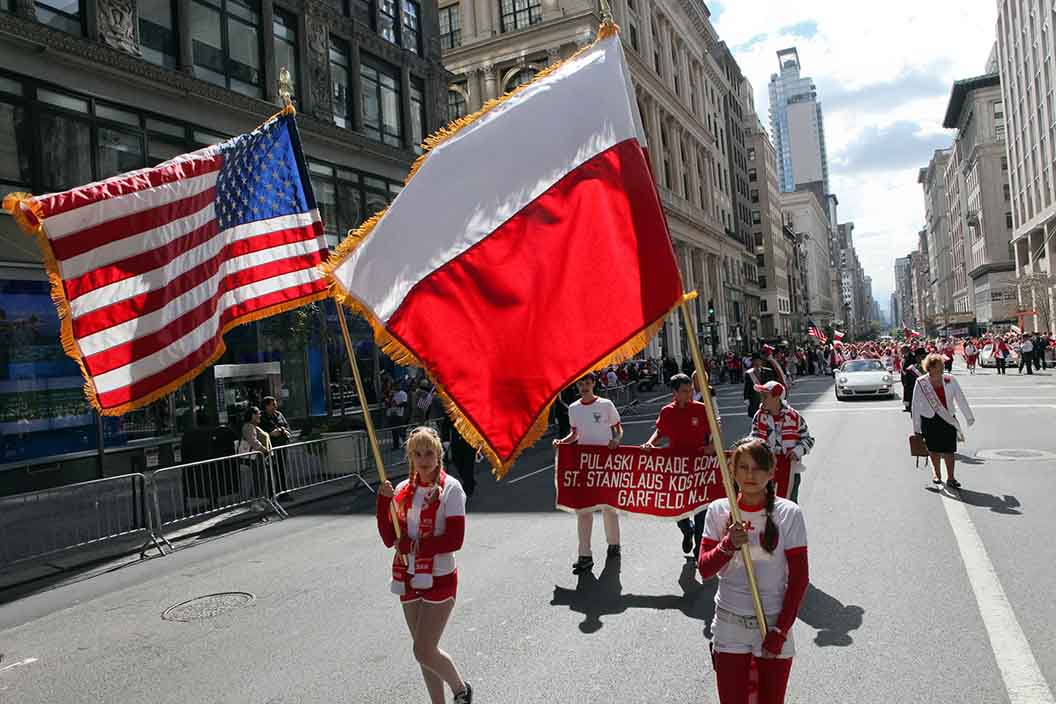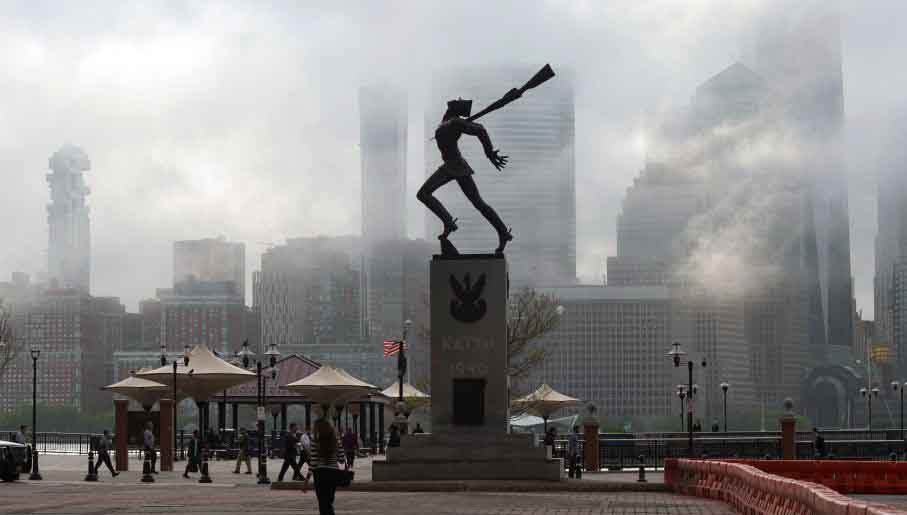On September 22, 2024, a monument dedicated to the Heroes of the "Fight for Independence after 1944-45 and Solidarity" was erected at the Polish cemetery in Doylestown, Pennsylvania. The unveiling ceremony was attended by, among others, the President of the Republic of Poland, Andrzej Duda.
The monument was erected in the Polish cemetery on the grounds of the sanctuary of Our Lady of Częstochowa in Doylestown, Pennsylvania. The initiators of its creation were American Poles led by Tadeusz Antoniak. The monument was designed and made by Richard Kuliński.
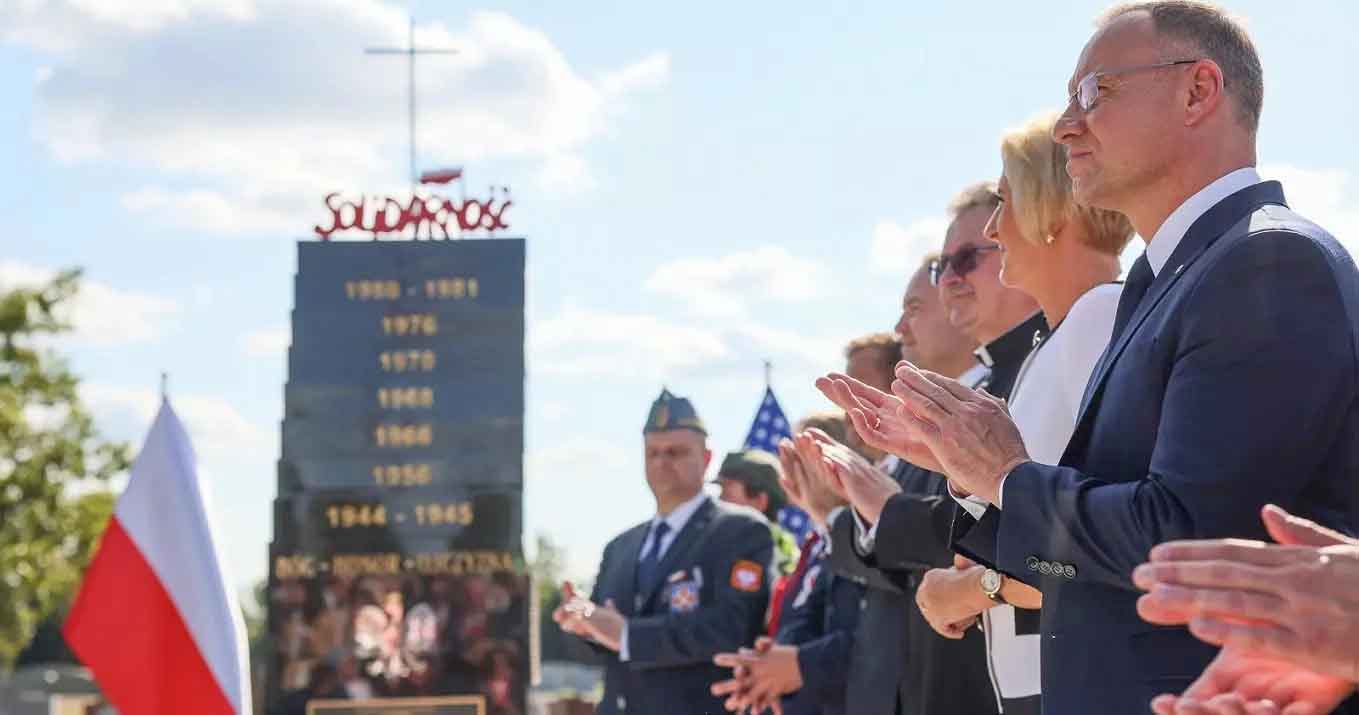
President Andrzej Duda with his spouse Agata. FOT. Marek Borawski (Źródło: DlaPolonii.pl)
The monument has the form of stairs, which symbolizes the Polish path to post-war independence. On each step, there are distinguished years, important for the Polish struggle to regain sovereignty and independence and for the Polish national identity: 1945 — the end of World War II and the beginning of communist enslavement, 1956 — Poznań June: brutally suppressed workers' strike, 1966 — Millennium of the Baptism of Poland: the beginning of national awakening, 1968 — March Events, 1970 — massacre of workers on the Coast, 1976 — strikes in Radom and Ursus and the establishment of the Workers' Defense Committee and 1980-1981 the establishment of "Solidarity", the August Agreements, the introduction of martial law and subsequent repressions. The monument is crowned with a cross and the inscription "Solidarity" — commemorating the ideas of August '80, the triumph of national unity and perseverance in the fight for freedom.
The ceremony of its dedication and unveiling was graced by the President of the Republic of Poland Andrzej Duda and his wife, as well as the President of the Institute of National Remembrance (Instytut Pamięci Narodowej, IPN) Karol Nawrocki. The IPN was the strategic investor in the construction of the monument.
This is a symbolic clasp of my honorable presidential path, which began in the USA with a visit in 2016 here, in the American Częstochowa. At that time, the monument to the Unbroken Soldiers was unveiled, and today, together with my compatriots, I have the honor of honoring the post-war heroes and the Solidarity generation.
– said President Andrzej Duda.
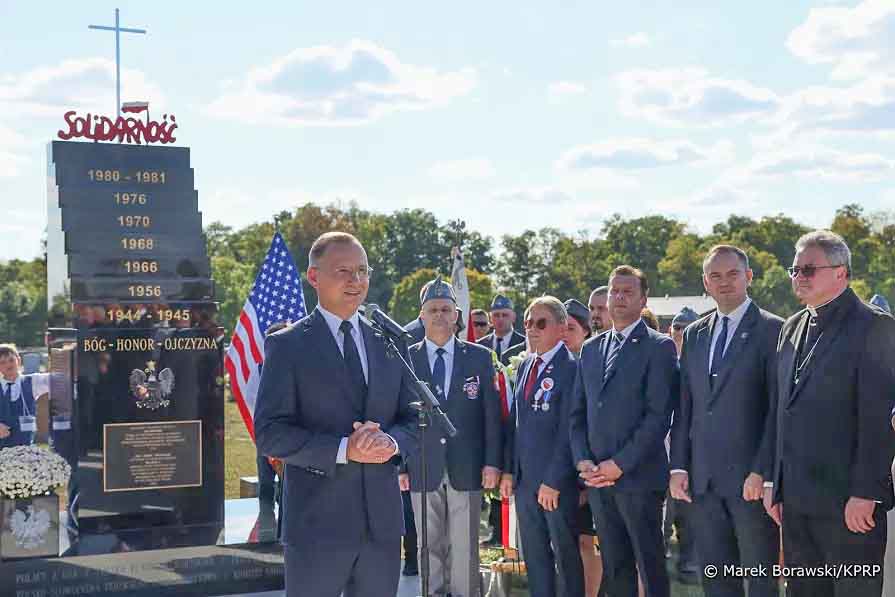
President of the Republic of Poland Andrzej Duda (second from the right) PHOTO: Marek Borawski (Source: DlaPolonii.pl)
Addressing representatives of the American Polish community, he said:
Together with us, you carry the fate of the Republic of Poland. You live far away, but your voice – also the voice on the matter of Poland – matters, for Poland, for its security, for its survival. For who we are and what we are. Thank you for also providing political support here, in the United States. Evidence of this support, which has been there all along – it is very simple – is the presence here of American presidents: President Johnson in 1966 at the millennium of the baptism of Poland, as well as President Ronald Reagan in 1984. And in the meantime, twice, still as a cardinal, the later Pope John Paul II.
In turn, the President of the Institute of National Remembrance, Karol Nawrocki, in his speech referred to the symbolism of the unveiled monument.
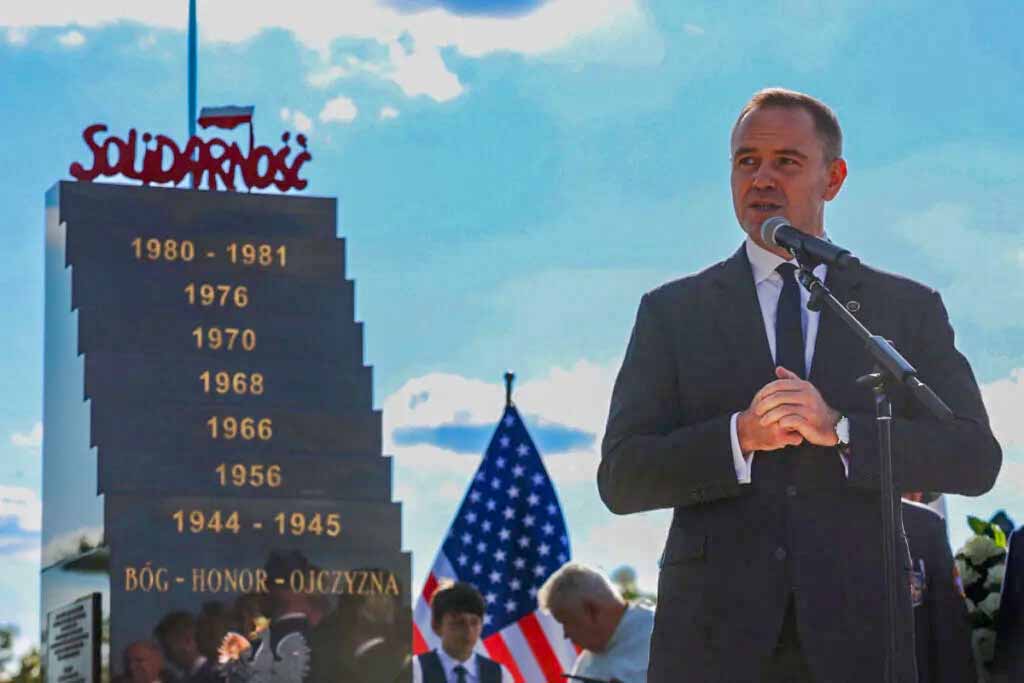
President of the Institute of National Remembrance Karol Nawrocki (PHOTO: Mikołaj Bujak IPN) (Source: DlaPolonii.pl)
These steps, these granite stones, symbolizing the path to freedom, are indeed reminders of dates and events, but behind these dates are hidden specific heroes and specific victims. Among them are also the youngest, who are a symbol of the determination of the Polish nation to fight for independence, but they are also a symbol of the unchanging cruelty of the communist system after 1945. In 1946, Danuta Siedzikówna "Inka" was murdered — a girl of almost 18 years old, who shouted "Long live Poland!" as she was dying. In 1956, when the people of Poznań were calling for dignity and independence, the communists killed 13-year-old Romek Strzałkowski. "Your mission is over, Romek, ours has begun" — the poet wrote about him. When in December 1970 Poles demanded freedom, dignity, independence on the streets of Pomeranian cities and other places in Poland, the communists sent 27 thousand soldiers, 9 thousand policemen and 550 tanks against the protesting workers, murdering 45 people, including 15-year-old Jerzy Skonieczka. The murderers of the last decade, those from the 80s, also did not waste time eliminating the lives of the youngest. In Gdańsk, 19-year-old Antoni Browarczyk and the even younger Emil Barchański were killed.
– enumerated the President of the Institute of National Remembrance.
According to Karol Nawrocki, this path of life of the heroes of the fight for Polish freedom ends where the symbol of the cross and the inscription "Solidarity" are located.
Where there is the symbol of the cross and the inscription of Solidarity – we are there. We – responsible for national memory, responsible for a free and independent Poland after 1989, which was born in such pains of transformation. This cross is a symbol of salvation, resurrection, victory of mercy and love over the communist system, on the one hand, but also, on the other hand, a great obligation. Solidarity shouts to us after St. Paul, “Bear each other’s burdens.” So we must also bear the burdens of those who came before us, whom we are obliged to remember.
– said Karol Nawrocki, president of the Institute of National Remembrance.
The new monument is the first of its kind in the United States.
Translation from Polish by Andrew Wozniewicz.







